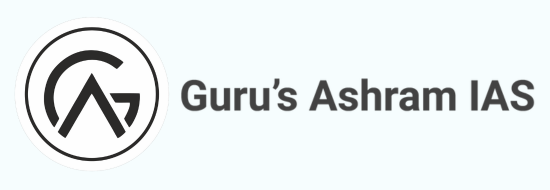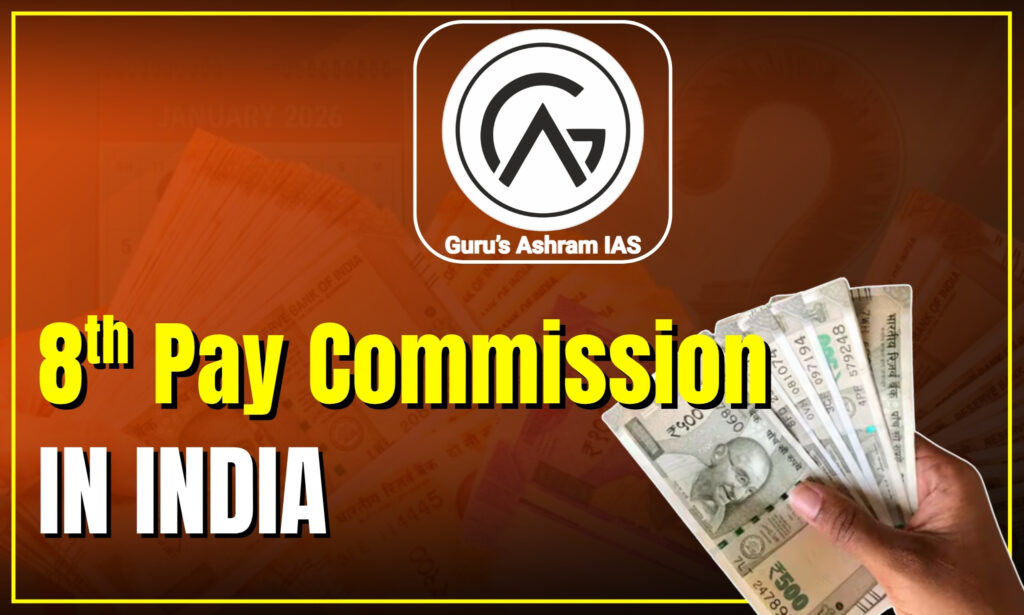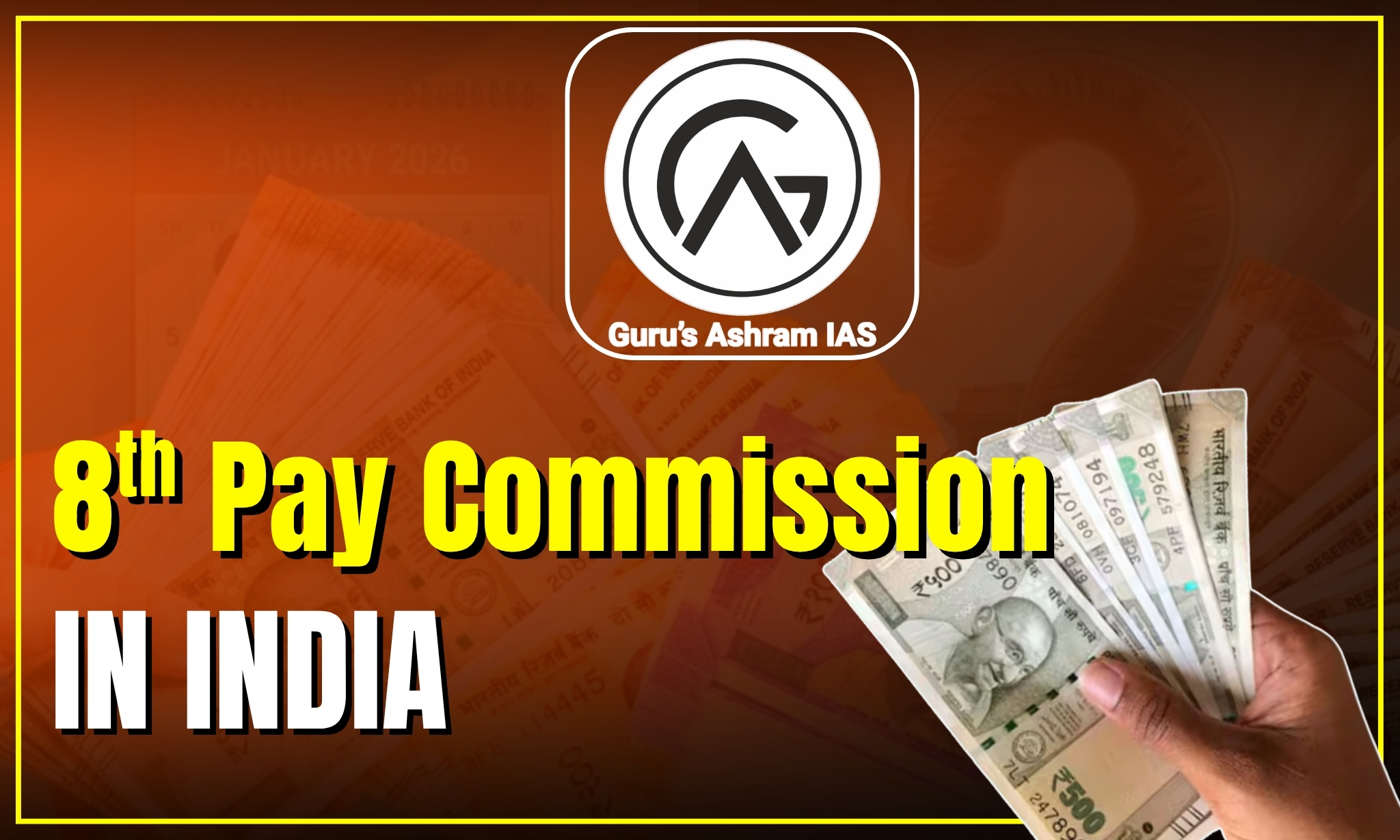8th Pay Commission: Guide to Salary Hikes, Pay Matrix, & Implementation Timeline
For 48.62 lakh central government employees and 67.85 lakh pensioners, the 8th Pay Commission is a ray of hope after years of unchanged salaries and pensions. It’s a big promise to boost 8th Pay Commission Employees Salary Hike, including IPS Salary, IAS Salary, and other Central Government 8th Pay Commission roles, to help keep up with rising prices. Approved by the Union Cabinet on January 16, 2025, this 8th Pay Commission Central Government initiative is set to update salaries, allowances, and pensions starting January 1, 2026. But worries about delays and whether pensioners will get their fair share are making everyone nervous. Let’s break down the 8th Pay Commission Latest News in easy words—what it is, how your salary after 8th Pay Commission might grow, what the 8th Pay Commission Fitment Factor is, and why things are taking time. For more details, check the 8th Pay Commission Salary Structure Pdf on dopt.gov.in or doe.gov.in.
-
Daily Quiz Telegram Channel: Click to Join
-
Guru’s Ashram IAS Telegram Group: Click to Join
-
Click To Join Guru’s Ashram IAS Official Whatsapp Channel :- (https://whatsapp.com/channel/0029Va68jla0AgW6JrNUzb44)
-
Click To Join Our Telegram Group Click Here:- ( https://t.me/gurusaashram )
-
Click To Join Our Whatsapp Group Click Here:- ( https://chat.whatsapp.com/J4HYp7p6jFa0wOpA644Sur )
Click Here To Call us now!
Enquiry Here, Fill this form & Ask the Questions
What is the 8th Pay Commission?
Every 10 years, the Indian government starts a Pay Commission to review and update salaries, allowances, and pensions for 8th Pay Commission Government Employees and retirees. The last one, the 7th Pay Commission, kicked off in 2016 with a minimum salary of ₹18,000 and a 7th Pay Commission Fitment Factor of 2.57. It ends on December 31, 2025. The 8th Pay Commission, approved on January 16, 2025, is all about helping 48.62 lakh workers and 67.85 lakh pensioners afford life as costs keep climbing. Run by the Department of Personnel and Training (DoPT) and Department of Expenditure (DoE), it will revamp the 8th Pay Commission Salary Structure, raise the minimum wage, and improve pensions for millions of families across India. This is big Salary News for roles like IPS Officer Salary and IAS Salary.
Quick Facts:
- Who benefits: About 48.62 lakh employees and 67.85 lakh pensioners.
- Goal: Increase 8th Pay Commission Salary Increase to tackle rising costs and make life easier.
- When: Set for January 1, 2026, but the 8th Pay Commission Date might shift due to delays.
- Where to check: Visit dopt.gov.in or doe.gov.in for Pay Commission News.
Also Check: 7th Pay Commission
8th Pay Commission Implementation Timeline/ When Will You Get the Money?
Everyone’s asking: when will the salary hike or pension revisions actually hit bank accounts? Here’s the latest scoop as of July 1, 2025, 5:50 PM IST:
Here’s the latest on the 8th Pay Commission Latest News:
- Approved: The government gave the green light for the 8th Pay Commission on January 16, 2025.
- Rules (Terms of Reference): They’re still figuring out the rules for the 8th Pay Commission Salary Structure 2025, which is causing worry about delays in the Pay Commission 8th rollout.
- Start Date: Planned for January 1, 2026, but if the rules or team aren’t ready soon, the 8th Pay Commission Date could be pushed back.
- Team Setup: Pay Commissions usually form 18–24 months before starting to plan the 8th Pay Commission Salary Pay Matrix. Right now, there’s no word on who’s on the team or what the rules will cover.
You can use an 8th Pay Commission Salary Calculator to estimate how much salary increase in 8th Pay Commission you might get based on the 8th Pay Commission Salary Slab.
Why Are People Worried?
The National Council (Staff Side), Joint Consultative Machinery (NC JCM), which represents 8th Pay Commission Government Employees and pensioners, is upset about the government’s silence. On June 18, 2025, NC JCM’s Secretary, Shiv Gopal Mishra, wrote to the Cabinet Secretary with these concerns:
- The DoPT announced the 8th Pay Commission in January 2025 and asked for input, which NC JCM provided. But there’s been no update on the 8th Pay Commission Salary Structure Pdf or rules since, as per Latest News For Central Government Employees.
- This lack of news is causing confusion and doubts about whether the January 2026 start for the 8th Pay Commission Salary Hike will happen.
- A rule in the Budget Act says the government can decide if pensioners get the same 8th Pay Commission Employees Salary Hike, making pensioners worry they might be left out.
The NC JCM is pushing for:
- Clear rules released soon to stop rumors and rebuild trust in the Central Government 8th Pay Commission process.
- A promise that pensioners get the same 8th Pay Commission Salary Increase benefits as employees.
- A team formed quickly to keep the 8th Pay Commission on track.
People are stressed because they’re counting on this Central Govt Employees Latest News for more money. Delays could upset millions, as discussed in 8th Pay Commission in Hindi updates.
What’s the Fitment Factor?
The 8th Pay Commission Fitment Factor is a number that decides how much salary increase in 8th Pay Commission you’ll get. It multiplies your current basic pay to give a higher amount, ensuring fair raises for everyone and helping with rising costs. For example:
- The 7th Pay Commission Latest News shows it used a fitment factor of 2.57, turning a ₹7,000 salary into ₹18,000.
- For the 8th Pay Commission, people expect a fitment factor between 2.28 and 3.0, meaning a good 8th Pay Commission Salary Hike for roles like IPS Ki Salary and IAS Ki Salary.
You can try an 8th Pay Commission Salary Calculator to see how the 8th Pay Commission Salary Structure affects your salary after 8th Pay Commission.
Proposed Fitment Factors
- Fitment Factor of 2.28:
- Minimum Basic Salary: Goes from ₹18,000 to ₹41,040 (a 34.1% salary hike).
- Minimum Pension: Climbs from ₹9,000 to ₹20,520.
- Dearness Allowance (DA): Expected to hit 70% by January 2026, likely rolled into the base salary.
- Fitment Factor of 2.86:
- Minimum Basic Salary: Jumps to ₹51,480.
- Minimum Pension: Rises to ₹25,740.
- Salary Hike: About 186% more than the 7th CPC minimum salary.
- Fitment Factor of 3.0:
- Minimum Basic Salary: Hits ₹54,000 (or ₹21,600 with a 20% salary hike in some estimates).
- Minimum Pension: Reaches ₹27,000.
- Salary Hike: Expected to be 20–30% across different pay levels.
How It Stacks Up Against the Past
Here’s a quick look at how past Pay Commissions changed salaries:
Pay Commission |
Hike in Pay (%) |
Fitment Factor |
Minimum Basic Salary |
| 4th Pay Commission | 27.6% | – | ₹750 |
| 5th Pay Commission | 31% | – | ₹2,550 |
| 6th Pay Commission | 54% | 1.86 | ₹7,000 |
| 7th Pay Commission | 14.29% | 2.57 | ₹18,000 |
| 8th Pay Commission | 20–30% (expected) | 2.28–3.0 (expected) | ₹21,600–₹54,000 (expected) |
The final fitment factor will come down to the 8th Pay Commission’s recommendations, setting the stage for millions of financial futures.
8th Pay Commission Pay Matrix
The pay matrix is a simple table that shows basic salaries for different pay levels, making it easy for central government employees to see how much their salary hike might be. The 8th Pay Commission will update this table to match the new fitment factor and higher minimum wages. Below is the projected pay matrix based on a 20% hike (fitment factor of ~1.2) and a 2.28 fitment factor for select grades:
Pay Matrix Level |
7th CPC Basic Salary (₹) |
8th CPC Basic Salary (20% Hike, ₹) |
8th CPC Basic Salary (2.28 Fitment, ₹) |
| Level 1 | 18,000 | 21,600 | 41,040 |
| Level 2 | 19,900 | 23,880 | – |
| Level 3 | 21,700 | 26,040 | 57,456 (Grade 2000) |
| Level 4 | 25,500 | 30,600 | – |
| Level 5 | 29,200 | 35,040 | – |
| Level 6 | 35,400 | 42,480 | 93,708 (Grade 4200) |
| Level 7 | 44,900 | 53,880 | – |
| Level 8 | 47,600 | 57,120 | – |
| Level 9 | 53,100 | 63,720 | 1,40,220 (Grade 5400) |
| Level 10 | 56,100 | 67,320 | 1,27,908 (SDM/ASP) |
| Level 11 | 67,700 | 81,240 | 1,84,452 (Grade 6600) |
| Level 12 | 78,800 | 94,560 | 1,79,664 (DM/SP/DCP) |
| Level 13 | 1,23,100 | 1,47,720 | 2,70,180 (Special Secretary/SSP/DCP) |
| Level 13A | 1,31,100 | 1,57,320 | 2,98,908 (DIG) |
| Level 14 | 1,44,200 | 1,73,040 | 3,28,776 (Secretary/IG) |
| Level 15 | 1,82,200 | 2,18,400 | 4,15,416 (Principal Secretary) |
| Level 16 | 2,05,400 | 2,46,480 | – |
| Level 17 | 2,25,000 | 2,70,000 | 5,13,000 (Chief Secretary/DGP) |
| Level 18 | 2,50,000 | 3,00,000 | 5,70,000 (Cabinet Secretary/IB-CBI-NIA Director) |
Salary Structure and How to Calculate It
The 8th Pay Commission will give the salary structure a big makeover for central government employees. Here’s what goes into it:
- Basic Pay: Your current basic pay multiplied by the fitment factor.
- Dearness Allowance (DA): Expected to hit 70% by January 2026, likely folded into the basic pay to keep things simple.
- House Rent Allowance (HRA):
- Metro Cities: 27% of the new basic pay.
- Tier-2 Cities: 20% of the new basic pay.
- Tier-3 Cities: 10% of the new basic pay.
- Travel Allowance (TA): Adjusted based on your job level and where you’re posted, with bigger amounts for city postings.
- Gross Salary: Basic pay + DA + HRA + TA – standard deductions (like taxes or pension contributions).
How to Calculate Your 8th CPC Salary
Let’s break it down with a 3.0 fitment factor:
- Find Your Current Basic Pay: Look at your 7th CPC pay level (e.g., ₹18,000 for Level 1).
- Calculate New Basic Pay:
New Basic Pay = Current Basic Pay × 3.0
Example: ₹18,000 × 3.0 = ₹54,000. - Add Dearness Allowance (DA): Let’s say DA is 50%:
DA = ₹54,000 × 0.50 = ₹27,000. - Add House Rent Allowance (HRA):
- Metro (27%): ₹54,000 × 0.27 = ₹14,580
- Tier-2 (20%): ₹54,000 × 0.20 = ₹10,800
- Tier-3 (10%): ₹54,000 × 0.10 = ₹5,400
- Add Travel Allowance (TA): Say, ₹3,600 for Level 1 in a metro city.
- Calculate Gross Salary:
Gross Salary = ₹54,000 + ₹27,000 + ₹14,580 + ₹3,600 – ₹5,000 (deductions) = ₹94,180 (Metro).
Projected Salaries (Fitment Factor 2.86)
Grade (Level) |
Basic Salary (₹) |
Gross Salary (₹) |
Net Take-Home (₹) |
| Grade 2000 (Level 3) | 57,456 | 74,845 | 68,849 |
| Grade 4200 (Level 6) | 93,708 | 1,19,798 | 1,09,977 |
| Grade 5400 (Level 9) | 1,40,220 | 1,81,073 | 1,66,401 |
| Grade 6600 (Level 11) | 1,84,452 | 2,35,920 | 2,16,825 |
Pension Revisions: A Big Boost for Retirees
The 8th Pay Commission will roll out major pension revisions to help pensioners keep up with rising costs. Here’s what’s on the table:
- Minimum Pension: Currently ₹9,000, expected to jump to:
- ₹20,520 (2.28 fitment factor)
- ₹25,740 (2.86 fitment factor)
- ₹27,000 (3.0 fitment factor)
- Fixed Medical Allowance (FMA): Set to rise from ₹1,000 to ₹3,000 per month, as proposed in the 34th SCOVA meeting on March 11, 2025, to help with growing healthcare costs.
- Timely Payments: A focus on getting pensions out on time to keep retirees financially secure.
The NC JCM is worried about a Finance Bill clause that lets the government decide whether pensioners get these pension revisions, and they’re pushing hard for equal treatment.
Allowances: What’s Changing?
The 8th Pay Commission will give allowances a big refresh to match today’s economy. Here’s what to expect:
- House Rent Allowance (HRA): Higher rates for metro cities (27%), with lower rates for Tier-2 (20%) and Tier-3 (10%) cities, based on the new basic pay.
- Travel Allowance (TA): Tailored to your posting, with more for city jobs and less for rural or semi-urban areas.
- Dearness Allowance (DA): Likely to be rolled into the basic pay at 70%, which might limit future DA increases.
- Fixed Medical Allowance (FMA): Proposed at ₹3,000 per month for pensioners, up from ₹1,000, which isn’t enough with today’s inflation.
- Outdated Allowances: The government might ditch old, irrelevant allowances to make the system simpler and more practical.
- NPS and CGHS Contributions:
- National Pension System (NPS): Employees put in 10% of basic pay + DA, and the government adds 14%. Higher salaries mean bigger contributions.
- Central Government Health Scheme (CGHS): Charges, linked to salary slabs, will go up with the new pay matrix.
Impact on IAS and IPS Officers
The 8th Pay Commission will bring big salary hikes for Indian Administrative Service (IAS) and Indian Police Service (IPS) officers, who keep the country’s administration and law enforcement running. Below are the hierarchies and revised salaries based on a 2.28 fitment factor:
IAS Hierarchy and Salaries
Post |
Experience |
Pay Level |
7th CPC Salary (₹) |
8th CPC Salary (₹) |
| Sub-Divisional Magistrate (SDM) | 1–4 years | Level 10 | 56,100 | 1,27,908 |
| Additional District Magistrate | 4–9 years | Level 11 | 67,700 | 1,54,356 |
| District Magistrate (DM) | 9–12 years | Level 12 | 78,800 | 1,79,664 |
| Special Secretary/Director | 13–16 years | Level 13 | 1,18,500 | 2,70,180 |
| Divisional Commissioner/Secretary | 16–24 years | Level 14 | 1,44,200 | 3,28,776 |
| Principal Secretary | 25–30 years | Level 15 | 1,82,200 | 4,15,416 |
| Chief Secretary | 30+ years | Level 17 | 2,25,000 | 5,13,000 |
| Cabinet Secretary | Topmost Post | Level 18 | 2,50,000 | 5,70,000 |
IPS Hierarchy and Salaries
Post |
Experience |
Pay Level |
7th CPC Salary (₹) |
8th CPC Salary (₹) |
| Assistant Superintendent of Police (ASP) | 1–2 years | Level 10 | 56,100 | 1,27,908 |
| Additional Superintendent of Police | 4+ years | Level 11 | 67,700 | 1,54,356 |
| Superintendent of Police (SP)/DCP | 6–9 years | Level 12 | 78,800 | 1,79,664 |
| Senior Superintendent of Police (SSP)/DCP | 13+ years | Level 13 | 1,18,500 | 2,70,180 |
| Deputy Inspector General (DIG) | 14–18 years | Level 13A | 1,31,100 | 2,98,908 |
| Inspector General (IG) | 18–22 years | Level 14 | 1,44,200 | 3,28,776 |
| Additional Director General (ADG) | 22–30 years | Level 15 | 2,05,400 | 4,68,312 |
| Director General of Police (DGP) | 30+ years | Level 17 | 2,25,000 | 5,13,000 |
| Director (IB/CBI/NIA) | Topmost Post | Level 18 | 2,50,000 | 5,70,000 |
Challenges and Expectations
The 8th Pay Commission could be a game-changer, but there are some hurdles to clear:
- No Word on the ToR: The government hasn’t shared the Terms of Reference, leaving employees and pensioners frustrated and questioning if the commission is on track.
- Pensioner Worries: A Finance Bill clause lets the government decide whether pensioners get pension revisions, sparking fears they might be left out, and prompting calls for fairness.
- Timeline Concerns: It usually takes 18–24 months to finalize recommendations, so the January 2026 implementation timeline could be at risk without a committee in place.
- Allowance Updates: Employees want allowances like HRA and TA to match today’s high costs, especially in cities, and hope outdated ones get scrapped for a simpler system.
- No Committee Yet: As of July 2025, there’s no committee, raising fears of a rushed or delayed process.
The NC JCM’s demands capture what millions are hoping for:
- A clear, public ToR to cut through the confusion and rebuild trust.
- A guarantee that pensioners get the same pension revisions as employees.
- A committee formed soon to keep the implementation timeline on track.
- Allowances that reflect today’s economic realities.
Conclusion
The 8th Pay Commission is a lifeline for central government employees and pensioners, promising relief after a decade of financial strain. With a tentative start date of January 1, 2026, it could push minimum basic salaries to ₹41,040–₹54,000 and pensions to ₹20,520–₹27,000, depending on the fitment factor (2.28–3.0). Allowances like HRA, TA, and FMA (proposed at ₹3,000 for pensioners) are in for a big update, and IAS and IPS officers will see hefty salary hikes. The new pay matrix keeps things clear and fair across pay levels.
But there’s work to do. The government’s silence on the ToR and committee formation has people worried about delays, and a Finance Bill clause has pensioners nervous about missing out. The NC JCM’s push for transparency and fairness speaks for millions. As the 8th Pay Commission takes shape, employees and pensioners are keeping a close eye, hoping for a fair, timely update that meets today’s economic challenges.
For the latest news, check dopt.gov.in or doe.gov.in.






